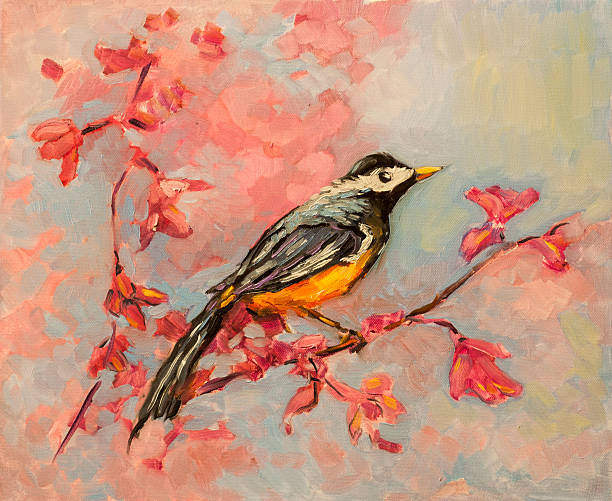Newly Curated Inventory of Oil Paintings for Sale
Newly Curated Inventory of Oil Paintings for Sale
Blog Article
Discovering Everything About Oil Paints: An Overview to Understanding Their Elegance and Worth
Oil paints have captivated target markets for centuries, offering a look into the creative mastery of various periods. Their abundant history is intertwined with ingenious techniques and profound psychological expression. Understanding the materials and approaches behind these art work can improve gratitude. Furthermore, the marketplace for oil paintings offers possibilities for enthusiasts and investors alike. As one discovers this fascinating world, the question develops: what makes an oil paint absolutely important?
The Background of Oil Painting: A Journey With Time
Although oil paint has origins that go back to ancient times, it absolutely prospered during the Renaissance, when musicians uncovered its convenience and rich shade possibility. Early examples can be mapped to the 7th century, with methods developing notably throughout societies. The medium ended up being noticeable in Northern Europe in the 15th century, particularly through the works of artists like Jan van Eyck, that pioneered its usage for detailed realistic look and lively hues. This period noted a departure from tempera paints, enabling better depth and structure. As oil painting spread, it affected countless musicians, leading to work of arts by distinguished figures such as Leonardo da Vinci and Rembrandt. The tool's legacy proceeds, forming the art world well into modern-day times.
Understanding Oil Paints: Products and Techniques
As musicians explore the world of oil paints, they come across a varied array of materials and techniques that specify this medium. The primary elements of oil paint consist of pigments, which give color, and drying oils, such as linseed, that bind the pigments and assist in application. Numerous additives can modify the paint's structure and drying out time, boosting flexibility. Strategies like glazing, where clear layers are developed, and impasto, which includes applying thick paint, enable various aesthetic effects. Furthermore, using brushes, scheme blades, and also fingers can produce distinct textures and coatings. Comprehending these products and strategies enables musicians to completely express their creativity and accomplish the desired effect in their artwork.
The Function of Color in Oil Paintings
Shade plays an essential function in oil paintings, affecting both aesthetic charm and emotional vibration. Understanding color concept essentials, including the relationships in between hues, can enhance a musician's capability to convey state of mind and environment. Furthermore, grasping shade mixing strategies enables higher depth and splendor in a paint's scheme.

Color Theory Fundamentals
Recognizing color theory is vital for artists dealing with oil paints, as it forms the foundation for creating harmonious and aesthetically interesting make-ups. Color theory includes the research study of just how colors connect, the shade wheel, and the partnerships in between main, second, and tertiary colors. Artists use corresponding shades to boost contrasts and produce focal factors, while similar shades advertise unity and cohesiveness within an item. Furthermore, the ideas of warm and trendy colors affect the understanding of depth and room in a paint. Comprehending these principles allows artists to manipulate color effectively, assisting the audience's eye and connecting their designated message. Proficiency of color concept ultimately enhances a musician's capability to share feelings and concepts through their job.
Emotional Impact of Shade
The emotional effect of color in oil paints plays a vital function in exactly how audiences connect and view with art work. Colors stimulate details feelings and moods, affecting the customer's emotion. As an example, warm tones like reds and oranges can produce a feeling of heat and energy, while great tones such as blues and greens typically stimulate calmness or self-questioning. Artists tactically pick shade palettes to enhance narrative components, directing the target market's emotional journey. The saturation and comparison of shades further enhance these impacts, attracting attention and creating emphasis. Eventually, the interplay of shades in oil paintings not just improves their visual charm but also functions as an effective medium for emotional expression, improving the customer's experience and interpretation.
Shade Combining Techniques
While several facets of oil painting add to the total structure, mastering color blending methods is important for achieving wanted results and deepness. Color mixing can be come close to via different approaches, including the additive and subtractive processes. Additive blending includes integrating colors of light, while subtractive blending relies upon pigments, where colors blend to produce new shades. Artists usually utilize a minimal scheme to develop harmonious jobs, comprehending the connections between key, second, and tertiary colors. Techniques such as glazing and scumbling additionally improve depth and luminosity. By masterfully blending colors, an artist can stimulate feelings, produce centerpieces, and achieve a sense of realism, eventually boosting the paint's visual and emotional impact.
Famous Oil Painters and Their Iconic Functions

Famous for their mastery of color and strategy, oil painters have created some of the most popular artworks in background. Renowned musicians like Vincent van Gogh astounded target markets with his stirring brushwork in "Starry Evening," while Claude Monet's "Impression, Dawn" prepared for Impressionism. Leonardo da Vinci's "Mona Lisa" stays a long-lasting icon of imaginative wizard, showcasing his ability in recording human expression. On the other hand, Rembrandt's "The Night Watch" shows his ingenious use light and shadow. Various other significant numbers consist of Pablo Picasso, that changed modern-day art with his vibrant experimentation in jobs like "Les Demoiselles d'Avignon," and Georgia O'Keeffe, whose vibrant depictions of blossoms and landscapes aided specify American innovation. Each artist's distinct style contributed substantially to the oil paint landscape.
How to Assess the High Quality of an Oil Paint
Reviewing the quality of an oil painting involves a cautious analysis of workmanship techniques, along with an evaluation of shade and make-up. Observing brushwork, layering, and the application of paint can disclose the musician's ability level. Furthermore, the interplay of colors and the overall setup of aspects contribute considerably to the paint's aesthetic worth.
Analyzing Workmanship Methods
A thorough assessment of craftsmanship strategies is crucial for figuring out the high quality of an oil painting. Critics need to initially analyze the application of paint; thick, distinctive brushstrokes may recommend a knowledgeable hand, while excessively consistent applications might show a lack of depth. oil paintings for sale. The layering strategy is likewise important; the visibility of glazes and differed density can improve brightness and complexity. Additionally, the top quality of the products made use of, such as the canvas and pigments, plays a considerable role in sturdiness and overall aesthetic. Focus to detail in aspects like edges and changes between colors shows the musician's commitment to their craft. Eventually, these techniques add to the painting's psychological influence and market value, working as indications of the musician's skill and intent
Assessing Shade and Composition
While examining the top quality of an oil painting, one should concentrate on the interaction of shade and composition, as these aspects are essential to the art work's total impact. Shade choices can establish and stimulate feelings mood; consequently, the artist's scheme ought to be analyzed for consistency and contrast. A well-balanced make-up guides the customer's eye and creates a feeling of unity. Musicians frequently utilize techniques like the rule of thirds or leading lines to improve visual interest. In addition, the use of light and shadow can include deepness, enhancing the three-dimensionality of the painting. Inevitably, an effective oil paint marries color and make-up, involving the audience and inviting a deeper admiration of the musician's vision and strategy.
Taking care of and Preserving Oil Paintings
Appropriate care and preservation of oil paintings is important for maintaining their integrity and long life. To shield these art work, it is essential to display them away from straight sunlight, which can cause fading and discoloration. Keeping a steady atmosphere with controlled temperature level and moisture further aids in avoiding damage. Cleaning need to be done carefully using a soft, completely dry fabric, avoiding any kind of rough chemicals that might harm the paint or varnish. Normal assessments for indications of deterioration, such as splitting or flaking, are advisable. When storing or transferring oil paintings, correct extra padding and framework are needed to prevent physical injury. Inevitably, persistent care contributes to the visual charm and value of oil paintings in time.
The Marketplace for Oil Paintings: Gathering and Investing
Understanding the marketplace characteristics for oil paintings is important for collectors and investors alike. The value of these artworks is affected by various aspects, including the artist's reputation, historical significance, and present fads. Collection agencies often seek items that reverberate personally while thinking about possible gratitude in worth. Public auctions and galleries function as primary locations for trading, with costs fluctuating based upon demand and rarity. Buying oil paints requires research into the market, along with an understanding of credibility and provenance. In addition, emerging artists may provide chances for considerable returns, while developed names can regulate high rates. On the whole, a strategic method to accumulating can yield both visual pleasure and monetary rewards.

Often Asked Inquiries
What Are the Ecological Effects of Oil Paint Materials?
The ecological influences of oil paint materials consist of the launch of unpredictable organic substances (VOCs), unsafe waste generation, and resource removal for pigments. These variables add to contamination and ecological degradation, increasing problems among ecologically mindful musicians and customers.
Exactly How Do Various Canvases Influence Oil Painting Outcomes?
Various canvases influence oil painting results substantially. Absorbency, surface, and structure top quality can modify paint application, drying times, and color vibrancy. Musicians typically pick certain canvases to achieve wanted impacts and improve their artistic expression.
Can Oil Paintings Be Restored if Harmed?
Oil paintings can without a doubt be restored if harmed. Specialist conservators make use of numerous strategies to repair rips, clean surfaces, and address staining, making sure that the artwork keeps its initial beauty and worth for future generations.
What Are the Indications of an Original Oil Paint?
The signs of an original oil painting include visible brush strokes, appearance variants, and an unequal canvas weave (oil paintings for sale). Furthermore, credibility may be confirmed with provenance, signatures, and the visibility of a varnish layer special to oil mediums
Just How Has Modern Technology Influenced Modern Oil Painting Techniques?
Modern technology has significantly affected contemporary oil painting strategies by introducing electronic tools for planning, enhanced products for appearance and long life, and on the internet more info systems for sharing and marketing art, therefore increasing musicians' innovative opportunities and audience get to. Oil painting has origins that date back to ancient times, it absolutely thrived throughout the Renaissance, when artists found its versatility and rich shade potential. The psychological influence of color in oil paints plays a crucial duty in just how customers view and connect with artwork. While lots of facets of oil painting contribute to the total composition, grasping shade blending techniques is necessary for attaining desired impacts and deepness. Reviewing the quality of an oil painting entails a cautious assessment of craftsmanship techniques, as well as an evaluation of shade and make-up. While examining the quality of an oil paint, one need to focus on the interaction of color and structure, as these elements are essential to the art work's general effect.
Report this page